Media | Articles
Keeping your eyes open while troubleshooting
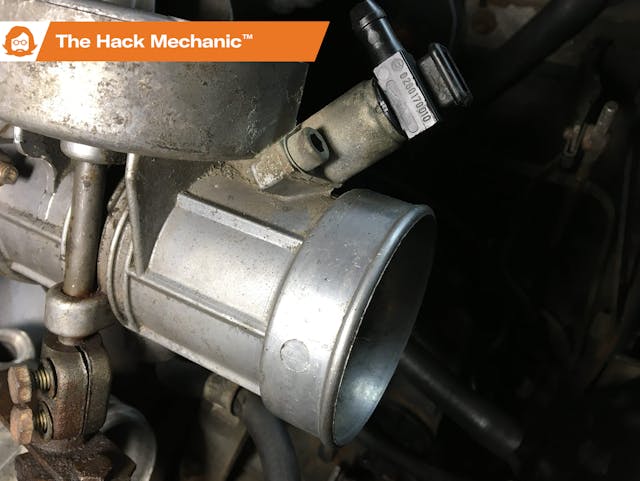
Groucho Marx famously used the line “Who are you going to believe—me or your own eyes?” Today, we’re going to tell a troubleshooting story, one that shows how sometimes even your own eyes can fool you.
I’ve made no secret of my love for the BMW 2002tii, the mechanically fuel-injected variant of the BMW 2002 that was sold in the United States from 1972–74. The car’s Kugelfischer mechanical injection system has a reputation for being arcane and troublesome. It’s really not, once you get to know it. And I’d like to think that, at this point, after owning a dozen of these cars, I know it very well.
One way in which the system is utterly conventional is in its use of a cold start valve. It’s basically a fifth injector. However, while the main injectors are mechanical—spring-loaded like an old diesel—the cold start valve is an electronic injector, spraying fuel into the throttle body when supplied with power and ground. This part of the design was used on Bosch fuel injection systems for decades. There are, of course, other components that control system warm-up, but the cold start valve is the one on the front line of getting the car to fire during cold cranking.
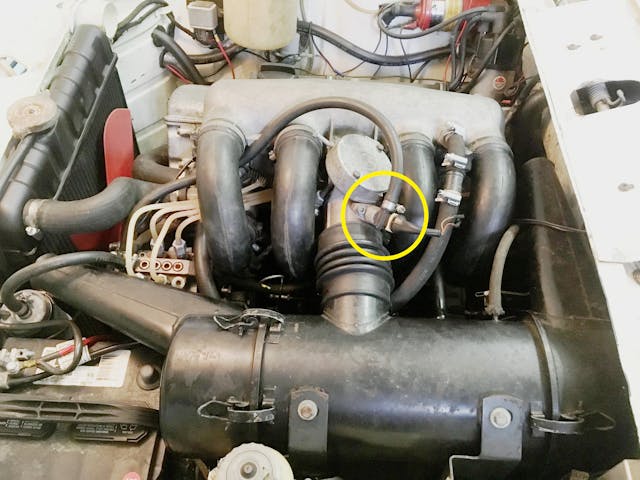
The cold start valve is supplied power by a cold start relay. Together with the thermo-time switch, this cigarette pack-sized box reads the coolant temperature and determines how long to spray the valve for. If the engine is already warm, it spritzes for just a second. For a dead-cold engine, it can keep the valve open for as long as 15 seconds. However, with these cars now being 50 years old, it’s very common for either the relay box itself to go bad, or for something in the wiring to prevent power from being supplied to the cold start valve. The top level of troubleshooting is trivial. Simply hot-wire the two terminals on the cold start valve to the battery. If it sprays, the problem isn’t in the valve (and it rarely is). Unfortunately, you really don’t want to be wrong about guessing that the problem is in the cold start relay box, as the list price is now $334 (street price about $280).
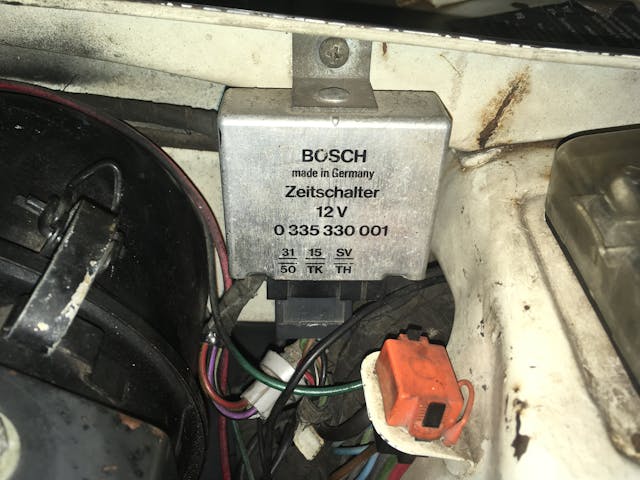
But fortunately, the work-around is as trivial as the top-level troubleshooting test—just wire one terminal on the cold start valve to ground, and the other to a push-button switch that supplies it power. Hold in the push-button while cranking the engine, and your cold start problems are usually solved. Many people do this on their 2002tiis. I certainly have. (FYI, there are two other closely related ways to do it: 1) Use a toggle switch instead of a push-button so, in very cold weather, you can leave the switch on for closer to 10 seconds. 2) Don’t use a toggle switch at all but instead wire it to the starter solenoid terminal so it just sprays while the engine is cranking. This works well in cool weather, but it sprays fuel longer than necessary in hot weather. The push-button works well for me.)
Marketplace
Buy and sell classics with confidence
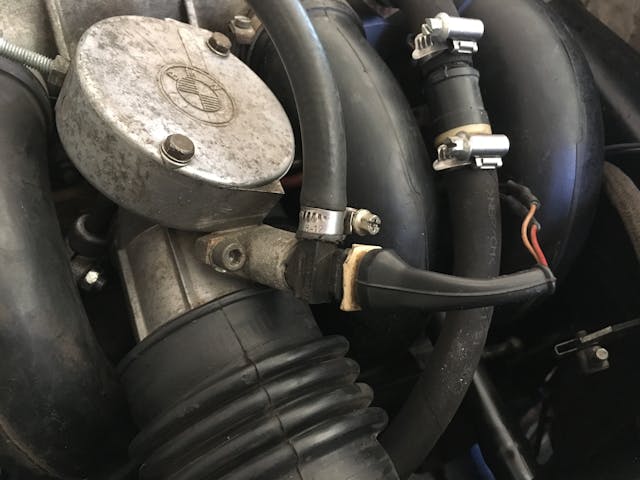
So, with that introduction, here’s the story of how, from that simple configuration, I created a problem that was maddeningly difficult to diagnose.
For many years, I had a Chamonix (white) ’72 2002tii, very similar to the Agave (green) one on which I just repaired the cracked head, but in much better condition. Like a fool, I sold it, figuring I didn’t need two 1972 2002tiis, shortly before the big run-up in 2002tii prices. (You want advice on when to sell a car? Just ask me. Then do the opposite of what I tell you.) When I bought the car, as part of the sort-out I had to deal with the cold start injector not firing. I hot-wired it as described above and verified that the injector itself worked fine. At the time, I had so many other things to do on the car that I simply wired the injector to always-on power via a little push-button mounted beneath the steering column. It worked perfectly, as it did on the other tiis I did this to in the past.
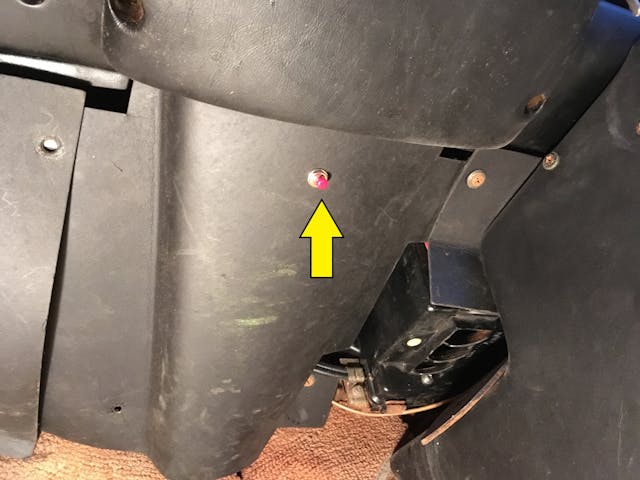
As I continued to sort out the car, I uncovered some lean running issues. A good way to deal with this is to get an actual mixture measurement by installing an ultra-wideband oxygen sensor in the exhaust feeding an air-fuel ratio gauge on the dash. The air-fuel gauge was, to make the obvious pun, instrumental in allowing me adjust the injection system so the mixture was nice and rich at wide-open throttle, and close to the optimal stoichiometric ratio of 14.7 to one during highway cruising.
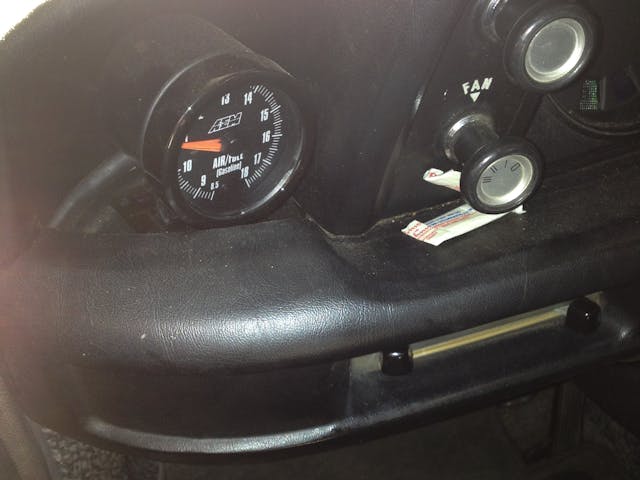
But sometime after I completed the gauge installation, I noticed that the car had become difficult to start when cold. If it was hot, it would restart instantly, but cold starting, even while holding in the push-button, would require a lot of cranking. And even if the engine was warm, like when pleasure-driving the car and returning to it after an on-the-road lunch, the amount of cranking needed to get it up again produced a good deal of ribbing from my road-trip compatriots. It was getting embarrassing. I wanted it fixed.
Obviously, the first thing I did was verify that the valve was spraying. I pulled off the air cleaner housing to expose the throat and the valve, cracked the key to ignition, rolled down the window, and leaned in so I could hit the little push-button while watching the cold start injector. I was absolutely certain it was spraying. Even without pulling off the air cleaner box, when I hit the push button, I could hear the solenoid in the injector click and hear the fuel spray, and if I held the button in for a few seconds, I could see fuel start to drip out of the throttle body. I can’t stress enough that there was zero doubt that it was spraying a mist of fuel when I pushed the button.
However, the use of the cold start valve is not unlike starting fluid in that it works best if the throttle is cracked open to allow the mist to be drawn directly into the throttle body while the engine is cranking. As such, even though the 2002tii is a fuel-injected car and thus doesn’t require pumping the gas pedal like a carbureted car with an accelerator pump, tiis are usually easier to start if the gas pedal is partially depressed. This made some difference, but the car was still surprisingly challenging to start.
As I discussed a few weeks ago, a very handy tool for troubleshooting difficult starting is a remote starter switch, as this allows you to do exactly what I described above—standing next to the engine, holding open the throttle, and spraying gas or starting fluid while cranking the engine. The funny thing was that it seemed that, when I did this—meaning when I used the remote starter switch, cracked the key to ignition, then simultaneously hit the button on the remote starter switch and the button for the cold start valve—the car started easily. It was in stark contrast with the car’s virtual refusal to start using the key.
I did what people sometimes do with information they don’t understand: I discounted it. It had to be a fluke. There couldn’t be a difference between how the car behaved when started via the key versus the remote starter switch.
If you read the above sentence carefully, you’ll see it contains a huge red flag. If you learn one thing from reading this, it’s that whenever you say something like “There couldn’t be a difference”—or, more commonly, “It can’t be that”—you’re admitting that you have a blind spot around “that.”
I posted the problem to the 2002-specific forum www.bmw2002faq.com. Someone replied, asking if I actually watched the cold start valve spray while I cranked the engine. I was a bit huffy with my response, explaining that I’d watched it spray with the key cracked to ignition, and I watched it spray while I cranked the engine with the remote starter switch, so clearly I had those bases covered. “No,” he said. “Did you actually watch it spray while you cranked the engine with the key?” I had to admit that I had not, simply because my arms weren’t long enough and my eyeball did not detach from its optic nerve, but the distinction between that and the testing I’d done seemed academic.
But just to rule it out, I roped my wife into sitting in the car, turning the key to ignition, holding in the cold start push button, then rotating the key to crank the engine, while I watched the cold start valve. The result was astonishing.
At the exact moment the engine cranked, the cold start valve stopped spraying. I wouldn’t have believed it if I hadn’t seen it with my own eyes. And even still, having seen it, my reaction was, basically, denial—like the autopilot says in the movie WALL-E when it sees the captain holding the plant, my first thought was “Not possible.”
But it was 100 percent repeatable. When I cranked the engine using the remote starter switch, the push-button caused the cold start valve to spray, but when the key was used instead, the valve stopped spraying exactly when the engine was cranking.
Slowly, like a sunrise, the answer began illuminating my addled trouble-shot brain:
Accessories.
Things connected to the “accessories” tab of the ignition switch work when the key is rotated to the first “accessories” setting, continue to work when the key is rotated to the second “ignition/run” setting, but momentarily cut-out when the key is rotated to the third “start” setting. At least that’s how they work on a 1970s-era BMW 2002.
I did a little test that didn’t even require leaving the driver’s seat and breaking out the multimeter. I turned on the car’s radio nice and loud. I then cranked the engine. As soon as the starter began spinning, the radio switched off, but switched back on when I relaxed the key back to the “run” setting.
Gotcha.
I pulled off the panels that cover the ignition switch, and verified that I did indeed have the switch for the cold start valve connected to the accessories tab. I connected it instead to ignition-on tab instead, and the problem completely went away.
So why did the problem crop up when it wasn’t initially there after I installed the switch?
I looked carefully at the wiring on the accessories tab. There were two wires crimped onto the same push-on spade connector. One went to the push-button switch. The other I had to trace. It went to the air-fuel meter and the oxygen sensor. And then it came back to me.
When I’d first wired the pushbutton, I’d hastily connected it to always-on power, so it worked perfectly. However, after that, when I installed the oxygen sensor and the air-fuel meter, I wired them in as accessories. I must’ve taken that opportunity to redo the wiring for the cold start push-button, thinking that this was a more appropriate connection method.
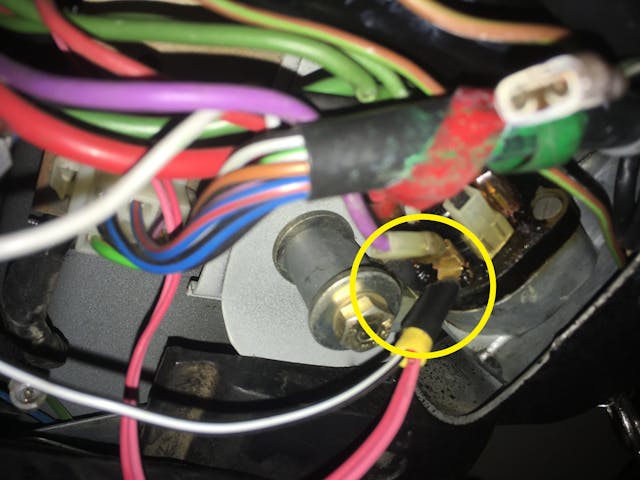
Really, it was the best kind of automotive troubleshooting: It had a mystery, it had a genuine “Eureka!” moment, no damage had been caused, the cost to set it right was zero, and doing so completely solved the problem. It really doesn’t get much better than that.
So, although Grouch Marx asked, “Who are you going to believe—me or your own eyes,” you still have to be willing to believe what you actually see. And that’s often harder than you’d think. Because we are more emotionally invested in our own past decisions than we’d like to admit.
***
Rob Siegel’s new book, The Best of the Hack MechanicTM: 35 years of hacks, kluges, and assorted automotive mayhem, is available on Amazon. His other seven books are available here, or you can order personally inscribed copies through his website, www.robsiegel.com.















